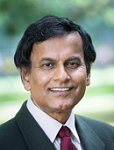Special Interview of Prof. Clarence W. de Silva
On August 28, 2022, the Editorial Office of Intelligence & Robotics (IR) was very honored to interview Prof. Clarence W. de Silva who is from Mechanical Engineering at the University of British Columbia (UBC), Vancouver, Canada. He is the Advisory Board Member of IR and he provided an article for the inaugural issue titled "Intelligent robotics - misconceptions, current trends, and opportunities".
It is a great honor that we have successively invited Prof. Clarence W. de Silva to participate in our journal and have contributed excellent paper to us. In this interview with IR, Prof. Clarence W. de Silva shared with us his resent research results, interpretation of his article and some suggestions to the younger scholars.
Let us take a look at what Prof. Clarence de Silva has said:
Q1. What attracted you to join the journal of Intelligence & Robotics as one of the Advisory Board Members?
I was invited to provide an article for the inaugural issue, and then I was automatically induced into the Advisory Board. I have served as an editor for many international journals (including IEEE Transactions on Control Systems Technology; Journal of Dynamic Systems Measurement and control—Transactions of ASME, and IFAC Journal Engineering Applications of Artificial Intelligence), so, this is not an extraordinary task for me.
Q2. As the Advisory board member, you have published a Perspective article at the inaugural issue entitle "Intelligent robotics - misconceptions, current trends, and opportunities". This article is quite inspiring, could you briefly introduce the core content of this article? As for now, do you have any new ideas to share?
It presented the evolution of Robotics, the influence of Artificial Intelligence (AI), particularly machine learning, on Robotics, and the current applications of Intelligent Robotics. It pointed out some misconceptions and shortcomings concerning Intelligent Robotics (particularly related to mechanical capabilities and the nature of intelligence that is incorporated). It indicated future trends and key opportunities available in Intelligent Robotics.
I work on some issues of machine learning as incorporated into mechanical devices like robots. They concern three issues: robot (or machine) self-awareness, use of the physics (dynamic model) of the machine, in the learning process, and domain transformation (when the source domain and the target domain of learning are not the same).
Q3. As the Advisory board member of IR, what are your suggestions and expectations to our Journal?
Keep publishing high-end, innovative and practical articles authored by active researchers and practitioners.
Q4. It's well known that your work influenced many young researchers. What suggestions do you have for young researchers who are going to step into this field?
Pay more attention to exploring the "black box" of AI and machine learning. Focus on the physics of the system.
It is known that the existing methods of artificial intelligence (AI, including deep learning) seek to imitate the results of a known system rather than properly modeling the mechanism that generates the results—they focus on the data rather than the "physics" of the system. The input-output data alone cannot properly comprehend the physics of a dynamic system (refer to the shortcomings of Open-AI's DELL-E2).
Rodney Brooks, the MIT researcher who developed the robotic vacuum cleaner Roomba, says "Every successful deployment (of AI) has either one or two expedients: It has a person somewhere in the loop, or the cost of failure, should the system blunder, is very low. … we, the consumers, soon adapt to each such AI agents, quickly learning what they can and can't understand." Imitating the late US president Kennedy, Brooks says, "Ask not what your AI system can do for you, but instead what it tricks you into doing for it." Understanding such drawbacks of AI, it is important to explore and enhance the AI techniques that are used in applications.
Biography of the Interviewee

Clarence W. de Silva is a Full Professor of Mechanical Engineering at the University of British Columbia (UBC), Vancouver, Canada, since 1988. He has served as Assistant and Associate Professor of Mechanical Engineering at Carnegie Mellon University (1978-87), Pittsburgh, USA. He graduated from the University of Ceylon with a B.Sc. Engineering degree with First Class Honors and obtaining the Dr. C. H. Hewavitarana Prize. After working in industry for several years, he obtained an MASc degree from University of Toronto, PhD degrees from MIT and University of Cambridge, and in 2020, the ScD degree, the so-called “Higher Doctorate,” from University of Cambridge. He is a Fellow of: IEEE, ASME, Canadian Academy of Engineering, and Royal Society of Canada. Also, he has been a Senior Canada Research Chair Professor in Mechatronics and Industrial Automation, NSERC-BC Packers Chair Professor in Industrial Automation, Mobil Endowed Chair Professor, Lilly Fellow (USA), Senior Fulbright Fellow (UK), Killam Fellow (UBC), Erskine Fellow (New Zealand), Professorial Fellow (Australia), Faculty Fellow (UBC), Distinguished Visiting Fellow of the Royal Academy of Engineering, UK, and a Peter Wall Scholar (UBC). He has authored 26 books and over 600 technical papers, approximately half of which are in journals.





